
Hernia Repair
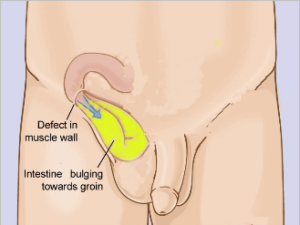
Hernia is due to a defect in muscle wall
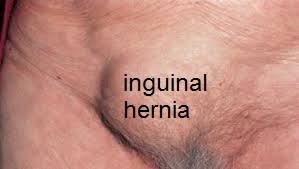
Hernia bulge seen on standing
A hernia is a weakness in the abdominal muscle wall through which abdominal contents (intestines or other parts of the bowel) protrude out to cause a bulge over the groin. Inguinal hernia is commonest in ageing men; with up to third developing on both sides. Elderly men have higher risk of getting hernias due to combination of weakened muscles and obesity as they age, although younger men can also get them if they are into strenuous physical activities. The hernia causes discomfort and even pain if its contents become stuck. Even if it does not become stuck, hernias tend to enlarge over time and will eventually need surgery.
The only way to stop the hernia from becoming worse is to repair the defect surgically. The repair can be done by conventional (open) or laparoscopic (key-hole) surgery.
Open Surgery
This is the traditional method because all types of hernia, big or small can be handled. However, the recovery takes longer as the wound pain and induration takes longer to settle. Open method is cheaper, but the disadvantage is the longer recovery time.
How it is done
Under spinal or general anaesthesia, an incision is made over the groin. After splitting the muscle layer, the hernia sac is dissected, opened and any intestine / contents are pushed back into the abdomen. The weakened area is repaired and the defect is reinforced with a synthetic mesh or with sutures. The surgery usually takes less than 1 hour.
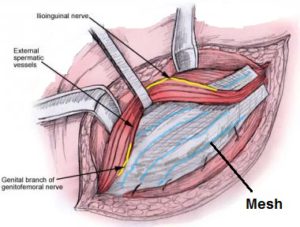
Mesh repair in open hernia surgery
Laparoscopic Surgery
Hernias can also be repaired through small incisions. Advantages of this technique include faster recovery time, small scars and less postoperative pain. Laparoscopic method also cost more because of the added cost of the laparoscopic instruments and consumables.
How it is done
Under general anaesthesia, 3 small cuts are made over the midline. The Totally Extra-peritoneal (TEP) method is preferred as the mesh does not enter into the abdominal cavity – hence avoiding any risk of bowel injury or bowel getting stuck to the mesh. The hernia sac is dissected out and reduced, a large mesh is placed and tacked down over the defect.
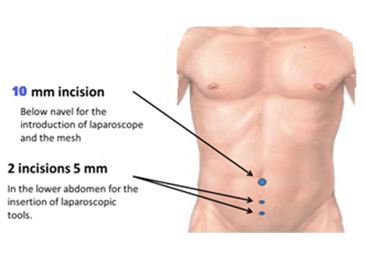
Lap hernia repair via 3 small incisions
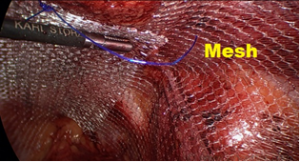
Mesh placed in laparoscopic hernia surgery
The clear advantage of laparoscopic repair is that bilateral hernias can be repaired through the same 3 keyholes without the need for a second incision as with the open method.
The disadvantage is that general anesthesia is needed for laparoscopic repair whereas open hernia repair can be done under spinal anaesthesia too. Large and irreducible hernias may not be suited too and the surgeon may have to convert to open surgery if the hernia contents cannot be reduced.
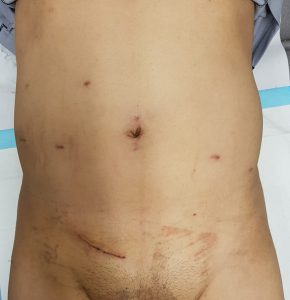
Scar from open hernia surgery
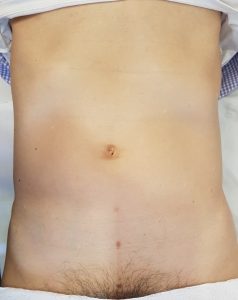
Scars after laparoscopic hernia surgery
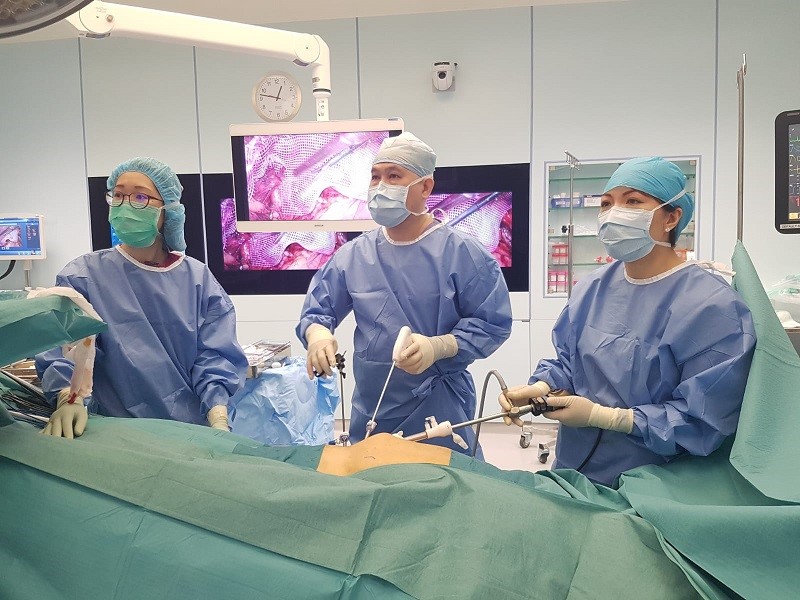
Dr Chin doing laparoscopic hernia surgery
Complications include:
- Pain and swelling over the groin (more common in open surgery)
- Blood clot (haematoma) in the scrotum or groin
- Inability to urinate (urinary retention) – occurs in men with pre-existing enlarged prostate
- Infection of the mesh / wound
- Numbness over the groin (more common in open method) – this can take more than 1 month to resolve
- Testicular atrophy (rare)
- Recurrence hernia
Desired outcomes:
- No recurrence ( < 1% )
- Wound infection ( < 3 % )
- No haematoma ( 5% occurrence )